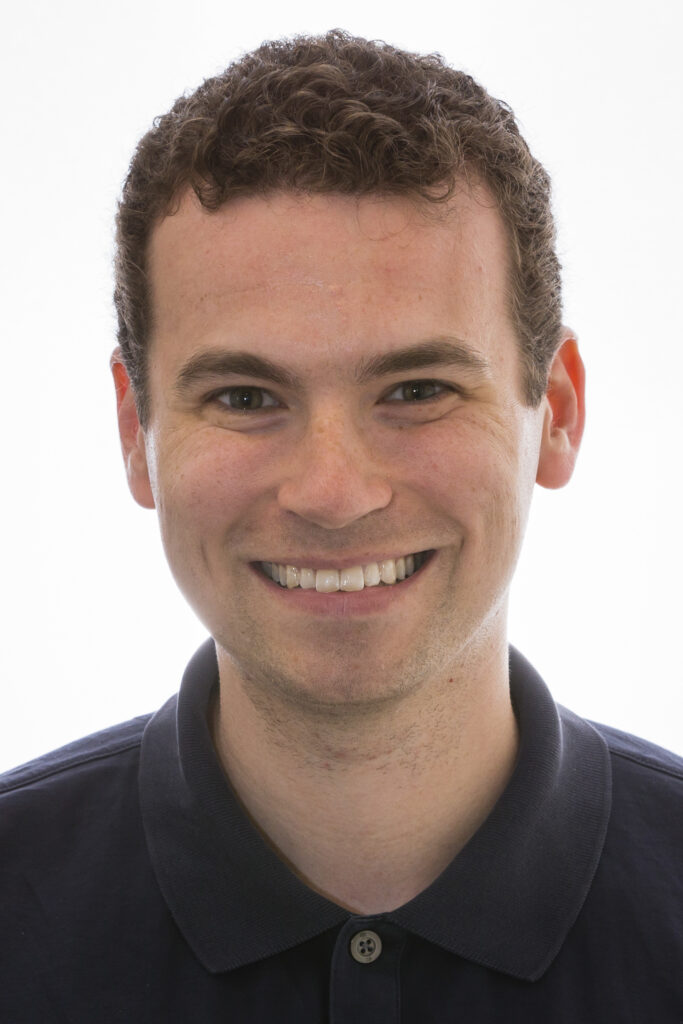Associate Professor Christopher L Asplund received his A.B. in Psychology (Cognitive) from Princeton University (2003) and his Ph.D. in Integrative and Cognitive Neuroscience from Vanderbilt University (2010). He then moved to Singapore, joining Duke-NUS as a research fellow in 2010. He participated in the inaugural year of Yale-NUS development and then joined the faculty in 2013.
Research Specialisations
- Attention Control
- Consciousness
- Attention
- Cognitive Neuroscience
- fMRI
Publications
Asplund, C.L., Obana, T., *Bhatnagar, P., *Koh, X.Q., & Perrault, S.T. (2020). It’s all in the timing: Principles of transient distraction illustrated with vibrotactile tasks. ACM Transactions on Computer-Human Interaction, 27(3): 17, 1-29. https://doi.org/10.1145/3386358
Wu, E.X.W., Liaw, G.J., *Goh, R.Z., Chia, T.T.Y., *Chee, A.M.J., Obana, T., Rosenberg, M.D., Yeo, B.T.T., & Asplund, C.L. (2020). Overlapping attentional networks yield divergent behavioral predictions across tasks: Neuromarkers for diffuse and focused attention? NeuroImage, 209: 116535, 1-28. https://doi.org/10.1016/j.neuroimage.2020.116535
Kee, T., Weiyan, C., Blasiak, A., *Wang, P., Chong, J.K., *Chen, J., Yeo, B.T.T., Ho, D., & Asplund, C.L. (2019). Harnessing CURATE.AI as a digital therapeutics platform by identifying N-of-1 learning trajectory profiles. Advanced Therapeutics, 9(2): 1900023, 1-11. https://doi.org/10.1002/adtp.201900023
Derbyshire, S.W.G., *Long, V.J.E., & Asplund, C.L. (2019). Stepwise increasing sequential offsets cannot be used to deliver high thermal intensities with little or no perception of pain. Journal of Neurophysiology, 122(2): 729-736. https://doi.org/10.1152/jn.00007.2019
Yeo, B.T.T., Krienen, F.M., Eickhoff, S.B., Yaakub, S.N., Fox, P.T., Buckner, R.L., Asplund, C.L., & Chee, M.W.L. (2015). Functional specialisation and flexibility in human association cortex. Cerebral Cortex, 25(10): 3654-3672. https://doi.org/10.1093/cercor/bhu217
Asplund, C.L., Fougnie, D., Zughni, S., Martin, J.W., & Marois, R. (2014). The attentional blink reveals the probabilistic nature of discrete conscious perception. Psychological Science, 25(3): 824-831. https://doi.org/10.1177/0956797613513810
Asplund, C.L. & Chee, M.W.L. (2013). Time-on-task and sleep deprivation effects are evidenced in overlapping brain areas. NeuroImage, 82: 326-335. https://doi.org/10.1016/j.neuroimage.2013.05.119
Asplund, C.L., Todd, J.J., Snyder, A.P., Gilbert, C.M., & Marois, R. (2010). Surprise-induced blindness: A stimulus-driven attentional limit to conscious perception. Journal of Experimental Psychology: Human Perception & Performance, 36(6): 1372-81. https://doi.org/10.1037/a0020551
Asplund, C.L., Todd, J.J., Snyder, A.P., & Marois, R. (2010). A central role for the lateral prefrontal cortex in goal-directed and stimulus-driven attention. Nature Neuroscience, 13(4): 507-12. https://doi.org/10.1038/nn.2509
Dux, P.E., Ivanoff, J.G., Asplund, C.L., & Marois, R. (2006). Isolation of a central bottleneck of information processing with time-resolved fMRI. Neuron, 52(6): 1109-20. https://doi.org/10.1016/j.neuron.2006.11.009
Asplund, C.L., Obana, T., *Bhatnagar, P., *Koh, X.Q., & Perrault, S.T. (2020). It’s all in the timing: Principles of transient distraction illustrated with vibrotactile tasks. ACM Transactions on Computer-Human Interaction, 27(3): 17, 1-29. https://doi.org/10.1145/3386358
Wu, E.X.W., Liaw, G.J., *Goh, R.Z., Chia, T.T.Y., *Chee, A.M.J., Obana, T., Rosenberg, M.D., Yeo, B.T.T., & Asplund, C.L. (2020). Overlapping attentional networks yield divergent behavioral predictions across tasks: Neuromarkers for diffuse and focused attention? NeuroImage, 209: 116535, 1-28. https://doi.org/10.1016/j.neuroimage.2020.116535
Kee, T., Weiyan, C., Blasiak, A., *Wang, P., Chong, J.K., *Chen, J., Yeo, B.T.T., Ho, D., & Asplund, C.L. (2019). Harnessing CURATE.AI as a digital therapeutics platform by identifying N-of-1 learning trajectory profiles. Advanced Therapeutics, 9(2): 1900023, 1-11. https://doi.org/10.1002/adtp.201900023
Derbyshire, S.W.G., *Long, V.J.E., & Asplund, C.L. (2019). Stepwise increasing sequential offsets cannot be used to deliver high thermal intensities with little or no perception of pain. Journal of Neurophysiology, 122(2): 729-736. https://doi.org/10.1152/jn.00007.2019
Yeo, B.T.T., Krienen, F.M., Eickhoff, S.B., Yaakub, S.N., Fox, P.T., Buckner, R.L., Asplund, C.L., & Chee, M.W.L. (2015). Functional specialisation and flexibility in human association cortex. Cerebral Cortex, 25(10): 3654-3672. https://doi.org/10.1093/cercor/bhu217
Asplund, C.L., Fougnie, D., Zughni, S., Martin, J.W., & Marois, R. (2014). The attentional blink reveals the probabilistic nature of discrete conscious perception. Psychological Science, 25(3): 824-831. https://doi.org/10.1177/0956797613513810
Asplund, C.L. & Chee, M.W.L. (2013). Time-on-task and sleep deprivation effects are evidenced in overlapping brain areas. NeuroImage, 82: 326-335. https://doi.org/10.1016/j.neuroimage.2013.05.119
Asplund, C.L., Todd, J.J., Snyder, A.P., Gilbert, C.M., & Marois, R. (2010). Surprise-induced blindness: A stimulus-driven attentional limit to conscious perception. Journal of Experimental Psychology: Human Perception & Performance, 36(6): 1372-81. https://doi.org/10.1037/a0020551
Asplund, C.L., Todd, J.J., Snyder, A.P., & Marois, R. (2010). A central role for the lateral prefrontal cortex in goal-directed and stimulus-driven attention. Nature Neuroscience, 13(4): 507-12. https://doi.org/10.1038/nn.2509
Dux, P.E., Ivanoff, J.G., Asplund, C.L., & Marois, R. (2006). Isolation of a central bottleneck of information processing with time-resolved fMRI. Neuron, 52(6): 1109-20. https://doi.org/10.1016/j.neuron.2006.11.009
Teaching modules
- Quantitative Reasoning
- Cognitive Psychology
- Human Neuroscience


